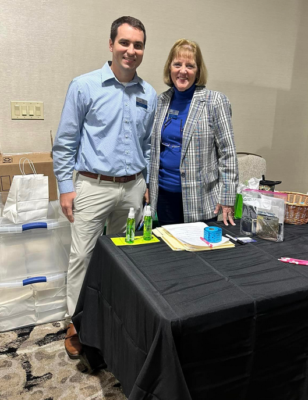Calling for lower sperm count, insulin-cancer connection, the five-second rule in action, and more
02 Nov 2023
Posted by Andrew Kantor
Stick with the landline, guys
How’s this for a lede: “Men who use their cell phones frequently have lower sperm counts than men who don’t”? Scary stuff.
[M]en who used their phones 20 or more times a day had a 21% higher risk of having a low overall sperm count that fell below the World Health Organization’s reference values for fertile men.
Interesting tidbit 1: It doesn’t seem to matter where the guys carry the phones (pants, jacket, belt), and they aren’t sure if how the phone is used — e.g., voice, texting, browsing — makes a difference.
Interesting tidbit 2: The effect has lessened with newer technology. Second-generation (2G) phones were worse than 3G, and 3G was worse than 4G. So there’s an argument for upgrading if you’re still nursing along your Pixel 1.
Next up: Trying to find the mechanism that’s at work (could it be heat?) and how specific phone usage affects the little swimmers.
Open enrollment is open
Remember that open enrollment for Obamacare marketplace plans started yesterday and runs through January 15. Last year more than 16.5 million Americans signed up for coverage, and this year is expected to be bigger thanks to millions being removed from Medicaid.
The good news is that people who find themselves kicked out of Medicaid can sign up for a marketplace plan at any time, in or out of the official enrollment season.
And while premiums have increased for a lot of plans, most people will qualify for a subsidy. They’re also likely to qualify for a lot of other cost savings if they earn less than about $75,000 for a family of four or $36,450 for an individual.
How insulin can lead to pancreatic cancer
Too much insulin — in the case of type 2 diabetes, for example — can lead to pancreatic cancer. This isn’t one of those “is associated with” findings; Canadian researchers actually found the cause and effect.
In a nutshell, it’s a case of too much of a good thing. Normal insulin levels stimulate the pancreas’s acinar cells to hum along, producing digestive juices. But too much insulin overstimulates them, leading to inflammation. Inflammation, we know, is one of the two big causes of everything bad, and in this case it converts those normal cells into precancerous ones.
So that’s a message for patients with type 2 diabetes: They’re risking more than they might think.
An AIP thanks — take 2
It seems that lots of you don’t use Facebook anymore, so you might have missed AIP VP Jonathan Marquess’s shout-out and thanks to all the AIP members who attended the fall meeting in Peachtree City.
So here’s the best part — photos from the event! (Click any one to embiggenate.)
Ozempic freak-out
The market’s knees are jerking like a patient with restless leg syndrome after slamming a couple of Red Bulls. The cause: Ozempic and kin, which are (they think) going to totally change the world.
Beer and snack stocks are plummeting. Walmart said it’s taken a hit on food sales. Clothing brands could see a boost from slimmed-down shoppers eager to update their wardrobes. Airlines are already calculating how much lighter flyers will save them on fuel costs.
Considering how new these drugs are, how expensive they are, and the fact that they have to be taken for life, perhaps this is a bit of an overreaction. (As one analyst put it, “The market is in a shoot-first, ask-questions-later mood when it comes to weight-loss drugs.”)
Get those lozenges ready
Strep throat is on the rise — in some areas (like Florida), rates are more than double what they were last year, and in others there’s been a 400% jump. And that’s just the cases that have been reported.
The cause: Epidemiologists aren’t sure, but it might simply be that the pandemic shuffled all the usual seasonality of viruses. Or made people more susceptible. Or maybe Mercury is just in retrograde.
The problem: Regardless of the cause, pediatric amoxicillin is in shortage. That means either using a second-best antibiotic, or leaving the kids to recover on their own, spreading their germs all the while.
There really is a 5-second rule
When it comes to breathing in someone’s viruses, it seems that five seconds is ‘peak droplet’.
Using a mannequin and a particle-tracking velocimetry system (as one does), Japanese researchers measured the aerosol coming out of someone’s mouth — someone who’s (theoretically) infected with a virus.
Result: “[W]ith or without ventilation, the number of aerosol particles peaked within 5 seconds after face-to-face encounters and then declined rapidly.” It also didn’t matter whether the person (or, rather, the mannequin) was walking, jogging, running, or sprinting; the five-second rule was always in effect.
Their suggestions: Holding your breath, keeping a good distance, or “positioning oneself upwind.”








